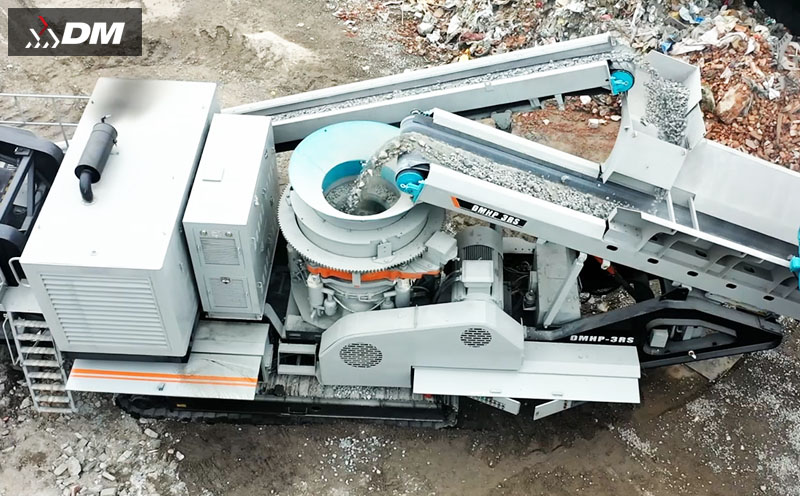
Proper Feeding Methods for Cone Crushers
The core of proper feeding for cone crushers is to ensure "uniformity, full-chamber filling, and no uneven loading". It is necessary to match the equipment's processing capacity, avoid over-feeding or under-feeding, and control material characteristics to protect the crushing chamber and core components, ensuring crushing efficiency and product quality.

I. Before Feeding: Clarify 3 Basic Requirements
- Control Material Particle Size: The maximum particle size of the feed must not exceed 80%-85% of the width of the crushing chamber's feed opening (e.g., if the feed opening width is 300mm, the maximum material particle size must be ≤255mm). Over-sized materials can easily get stuck at the feed opening, causing equipment overload or liner damage. They must be pre-crushed with a jaw crusher first.
- Stabilize Material Moisture: The moisture content of materials should be controlled within 5%-8%. Excessively high moisture (>10%) can cause materials to agglomerate, adhere to the crushing chamber walls, or block the discharge opening. Excessively low moisture (<3%) leads to large amounts of dust, requiring supporting dust removal equipment and preventing dust from entering the lubrication system.
- Remove Impurities and Foreign Objects: Before feeding, use iron separators and sieving machines to remove metal blocks (e.g., bolts, steel bars), wood blocks, and other foreign objects from the materials. Foreign objects entering the crushing chamber will directly impact the main shaft or liners, causing "stalling" or component breakage. In severe cases, shutdown and disassembly for maintenance are required.
II. During Feeding: Follow 4 Operational Standards
- Maintain Uniform and Continuous Feeding: Feed materials at a constant speed using a vibrating feeder or belt conveyor to ensure the crushing chamber is continuously filled (but not overflowing). Avoid intermittent feeding—under-feeding causes "empty striking" in the crushing chamber, accelerating local wear of liners; over-feeding leads to sudden increases in equipment load, excessive motor current, and even triggering overload protection shutdown.
- Avoid Material Uneven Loading: During feeding, materials must be evenly distributed around the circumference of the crushing chamber. Do not concentrate feeding from one side. Uneven loading causes excessive wear on liners on one side of the chamber, material accumulation on the other side, uneven force on the main shaft (shortening bearing life), and significant deviations in product particle size.
- Match Processing Capacity Rhythm: Adjust the feeding speed according to the cone crusher's rated processing capacity (e.g., 100-150t/h), ensuring the actual feeding amount does not exceed 10% of the rated value. Judge by observing the material flow at the discharge opening: uniform discharge without accumulation indicates proper feeding rhythm; fluctuating or blocked discharge requires immediate reduction of feeding speed.
- Monitor Equipment Status in Real-Time: Continuously observe parameters such as motor current, equipment vibration, and oil temperature during feeding. If the current exceeds 10% of the rated value (e.g., rated current 100A, actual ≥110A), the machine vibration amplitude increases significantly (>0.15mm), or the lubricating oil temperature exceeds 60℃, immediately reduce or stop feeding, and check for blockages, loose liners, or other issues.
III. Special Scenarios: Handling 2 Common Issues
- Processing Sticky Materials (e.g., ores with high clay content): Install a spray device above the feeder (with a small amount of water to control moisture at 6%-7%) or set a scraper at the feed opening to regularly clean materials adhering to the chamber walls, preventing agglomeration and blockage. Also, shorten feeding intervals to avoid prolonged material retention in the chamber.
- Feeding During Equipment Start-Up and Shutdown: When starting up, first start the cone crusher and wait for stable operation (about 3-5 minutes) before feeding. Before shutdown, stop feeding first, and wait until the crushing chamber is completely empty (no material discharged from the discharge opening) before turning off the equipment. Never start or stop the machine with materials inside, as this will cause "stalling" during the next start-up, requiring manual cleaning of the chamber before restarting.





We will answer your email shortly!